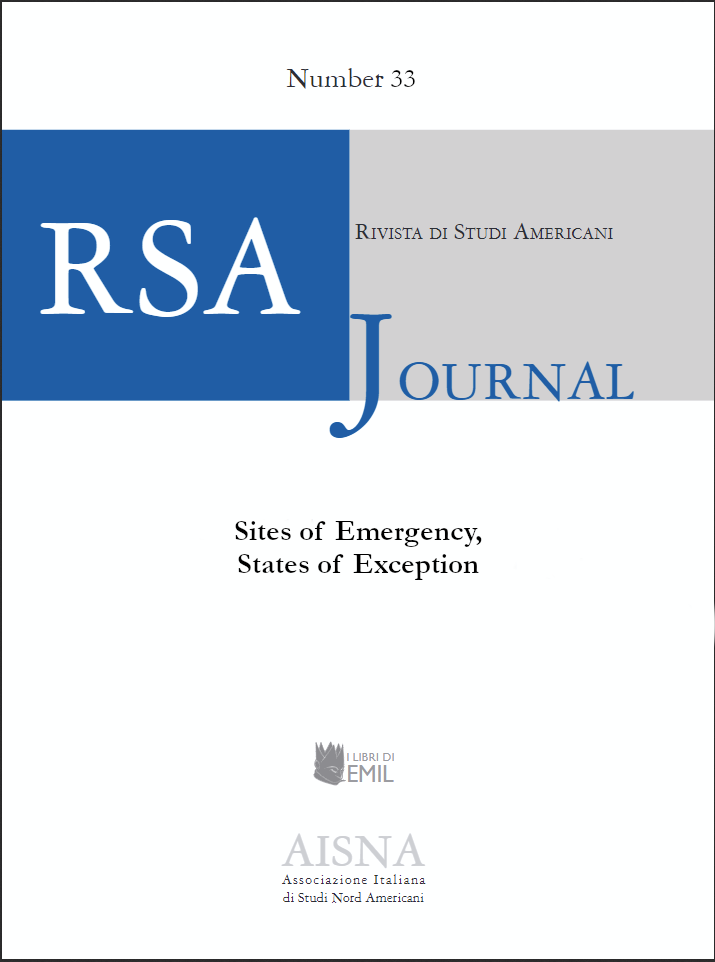A “Maze of Stone-shadowed Twilight”
The Disorienting Nightmarescape of H. P. Lovecraft’s “At the Mountains of Madness”
DOI:
https://doi.org/10.13135/1592-4467/8433Parole chiave:
disorientation, neosupernatural, parascientificfictionAbstract
This article analyzes H. P. Lovecraft’s only novel At the Mountains of Madness (1936), the author’s most representative endeavor of what I would refer to as “neosupernatural parascientificfiction” – a literary mode defined by the efficacious interplay of (dreadful) unnatural phenomena and science-oriented veracity. Interrogating the persistent oscillation between linguistic overdescription and referential ambiguity in Lovecraft’s longest story, while assessing its evident but idiosyncratic indebtedness to E. A. Poe’s The Narrative of Arthur Gordon Pym of Nantucket (1837), I argue that At the Mountains of Madness dwells on conceptual, chronospatial as well as textual complexity to establish a connection between form, content and readerly experience. I turn to Graham Harman’s weird realism theory and Joseph Frank’s seminal notion of literary spatiality to posit that the story’s thematic apparatus, labyrinthine discourse, and intertextual dynamics concur to set up a trap into which readers are lured, in order to elicit in them a growing sense of disorientation.
##submission.downloads##
Pubblicato
Fascicolo
Sezione
Licenza
Avviso sul Copyright
RSAJournal applica una licenza CC BY-NC-ND a tutti i suoi contributi. Questa licenza consente agli utenti di copiare e distribuire il materiale in qualsiasi supporto o formato solo in forma non adattata, per scopi non commerciali e a condizione che venga esplicitato/a l'autore/autrice dell'opera. CC BY-NC-ND include i seguenti elementi:
- BY: L'autore deve essere riconosciuto come tale.
- NC: Sono consentiti solo utilizzi non commerciali dell'opera.
- ND: Non sono consentite opere derivate o adattamenti dell'opera.
Gli autori che pubblicano con questa rivista accettano i seguenti termini:
- Gli autori conservano il copyright e tutti i diritti di pubblicazione per i loro contributi alla rivista.
- Gli autori concedono alla rivista il diritto di prima pubblicazione in base alla licenza internazionale Creative Commons Attribution-NonCommercial-NoDerivatives 4.0, che consente ad altri di condividere l'opera non modificata per scopi non commerciali a condizione che venga esplicitato/a l'autore/autrice dell'opera e la sede di pubblicazione iniziale (questa rivista).
- Gli autori sono in grado di stipulare accordi contrattuali separati e aggiuntivi per la distribuzione non esclusiva della versione pubblicata dalla rivista (ad esempio, per inserirla in una repository istituzionale o pubblicarla in un libro), con l'indicazione che il contributo è stato precedentemente pubblicato in RSAJournal.




